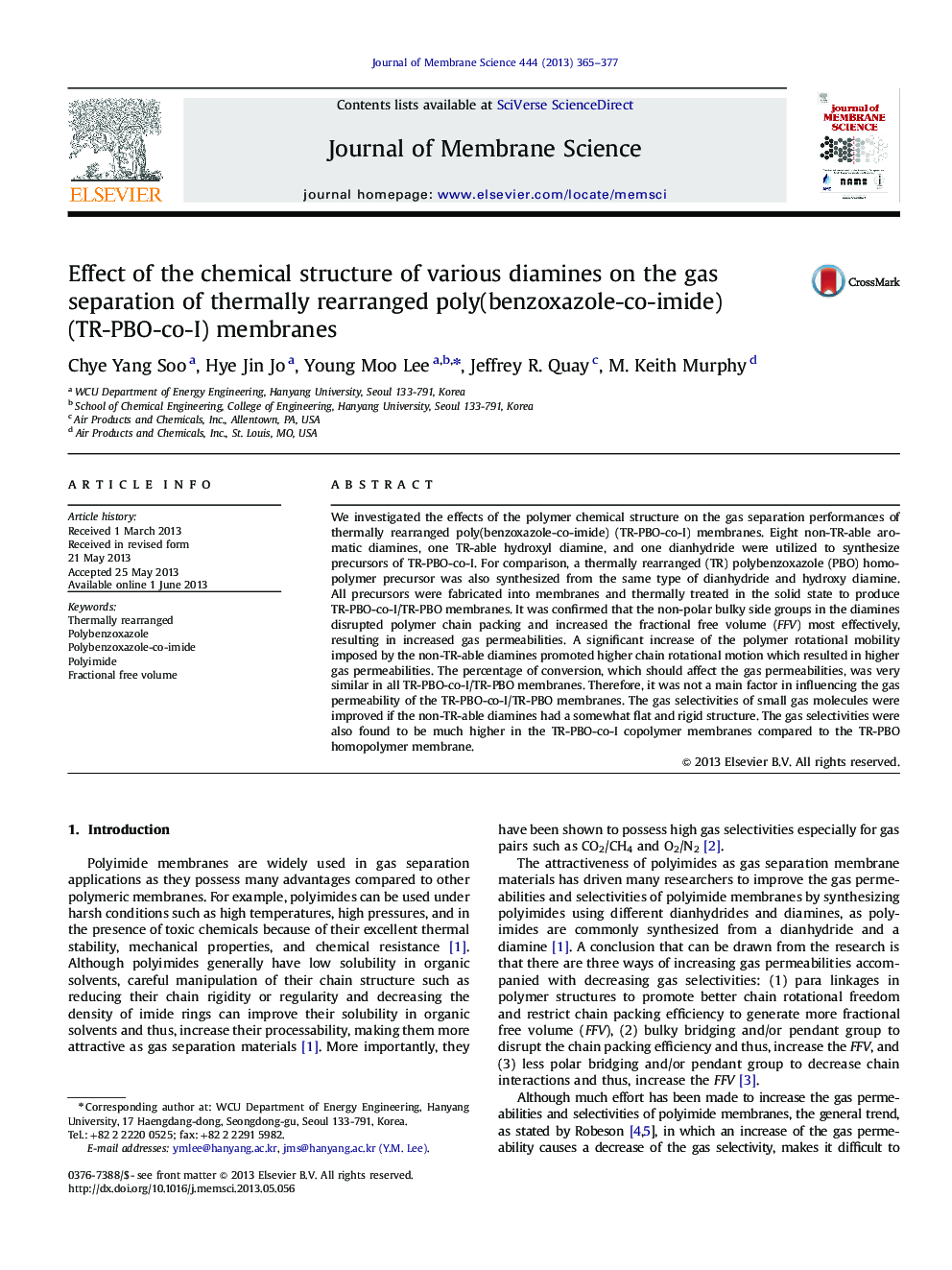| Article ID | Journal | Published Year | Pages | File Type |
|---|---|---|---|---|
| 7022533 | Journal of Membrane Science | 2013 | 13 Pages |
Abstract
We investigated the effects of the polymer chemical structure on the gas separation performances of thermally rearranged poly(benzoxazole-co-imide) (TR-PBO-co-I) membranes. Eight non-TR-able aromatic diamines, one TR-able hydroxyl diamine, and one dianhydride were utilized to synthesize precursors of TR-PBO-co-I. For comparison, a thermally rearranged (TR) polybenzoxazole (PBO) homopolymer precursor was also synthesized from the same type of dianhydride and hydroxy diamine. All precursors were fabricated into membranes and thermally treated in the solid state to produce TR-PBO-co-I/TR-PBO membranes. It was confirmed that the non-polar bulky side groups in the diamines disrupted polymer chain packing and increased the fractional free volume (FFV) most effectively, resulting in increased gas permeabilities. A significant increase of the polymer rotational mobility imposed by the non-TR-able diamines promoted higher chain rotational motion which resulted in higher gas permeabilities. The percentage of conversion, which should affect the gas permeabilities, was very similar in all TR-PBO-co-I/TR-PBO membranes. Therefore, it was not a main factor in influencing the gas permeability of the TR-PBO-co-I/TR-PBO membranes. The gas selectivities of small gas molecules were improved if the non-TR-able diamines had a somewhat flat and rigid structure. The gas selectivities were also found to be much higher in the TR-PBO-co-I copolymer membranes compared to the TR-PBO homopolymer membrane.
Related Topics
Physical Sciences and Engineering
Chemical Engineering
Filtration and Separation
Authors
Chye Yang Soo, Hye Jin Jo, Young Moo Lee, Jeffrey R. Quay, M. Keith Murphy,
